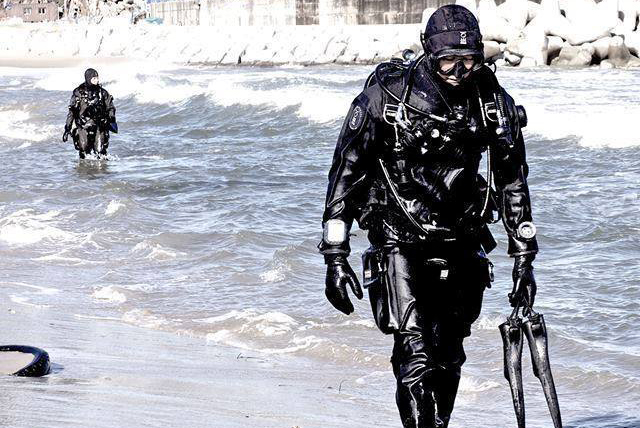Drysuits are a crucial piece of equipment for various water-related activities, from diving to industrial applications. These specialized suits have a rich history that spans over a century.
Early Beginnings
The concept of a waterproof suit can be traced back to the early 20th century when the need arose for garments that could protect individuals from the cold and wet conditions encountered in underwater activities. The first rudimentary drysuits were essentially rubberized canvas suits, often referred to as "dry bags."
Neoprene Innovation
One of the most significant developments in the history of drysuits came in the early 1950s with the introduction of neoprene rubber. Neoprene, a synthetic rubber material, proved to be an excellent choice for drysuit construction due to its flexibility, durability, and insulating properties. These early neoprene drysuits were typically one-piece garments with integrated hoods, gloves, and boots. They marked a significant leap forward in terms of comfort and thermal protection for divers and other water enthusiasts.

Latex Seals
To enhance the waterproof integrity of drysuits, latex seals were introduced in the mid-20th century. These seals, attached at the neck and wrists, provided an effective barrier to prevent water from entering the suit. Latex seals allowed divers and other users to stay dry and warm even in the most challenging underwater conditions. They also improved the overall comfort of drysuits by reducing the water exchange inside the suit.
Modern Drysuit Innovations
The 21st century has witnessed further innovations in drysuit technology. Manufacturers have introduced advanced materials and manufacturing techniques, making modern drysuits lighter, more durable, and better fitting. Some models now feature innovative inflation systems that allow users to adjust their buoyancy with greater precision. Additionally, technological advancements have led to improved thermal linings, such as breathable fabrics, which regulate body temperature and moisture.
Conclusion
The history of drysuits is a tale of continuous improvement, driven by the need for better protection, comfort, and versatility in a range of water-related activities. From the rudimentary dry bags of the early 20th century to the cutting-edge, modular drysuits of the present day, this evolution represents a remarkable journey in the world of aquatic apparel. The development of drysuits has significantly expanded the possibilities for underwater exploration, commercial operations, and rescue missions, demonstrating the importance of innovation in this specialized field.

